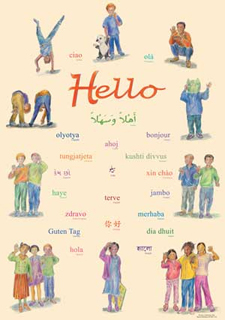

| The Multicultural Library: How Librarians are Responding to the Needs of Ethnically Diverse Communities by Anneke Forzani  According to 2005 Census data, over 12% of the US population is now foreign born and about 1 in 5 residents age 5 and older speak a language other than English at home. These figures are expected to increase, and are considerably higher in many areas of the country. Many new immigrants are struggling to learn English while maintaining their connection with their heritage language and country. According to 2005 Census data, over 12% of the US population is now foreign born and about 1 in 5 residents age 5 and older speak a language other than English at home. These figures are expected to increase, and are considerably higher in many areas of the country. Many new immigrants are struggling to learn English while maintaining their connection with their heritage language and country.As the United States has become increasingly diverse, more and more librarians are implementing creative strategies to attract and meet the needs of their ethnic patrons. Many libraries have transformed themselves into centers of information and learning for the diverse community. Following is a list of innovative ways librarians are welcoming and attracting their ethnic populations:
For librarians just beginning to develop their programs and collections for ethnic patrons and language learners, here are a few recommendations to get started:
Ethnic patrons truly appreciate when libraries increase their language holdings and offer services and programs to meet the needs of non-native-English speakers. Small, gradual steps to move forward in this area meet with great response, and establish libraries as true centers of learning for the entire community. Anneke Forzani is President and Founder of Language Lizard, LLC. To see more articles and archived newsletters, please visit: http://www.languagelizard.com/newsresources.htm. Want to use this article in your e-zine or web site? Contact Anneke Forzani at [email protected]. |



Home | Newsletter Signup | Connect With Us On Twitter! | Like Us On Facebook! | Follow Us On Pinterest! | Blog | About Us
Become an Affiliate | Products | Product Reviews | Testimonials | Free Resources | Customer Service
FAQ | Press Room | Privacy Policy | Terms of Use | Product Index | Category Index | Contact Us
© 2015 Language Lizard, LLC. All Rights Reserved. Website Design & Development by MergeVisible